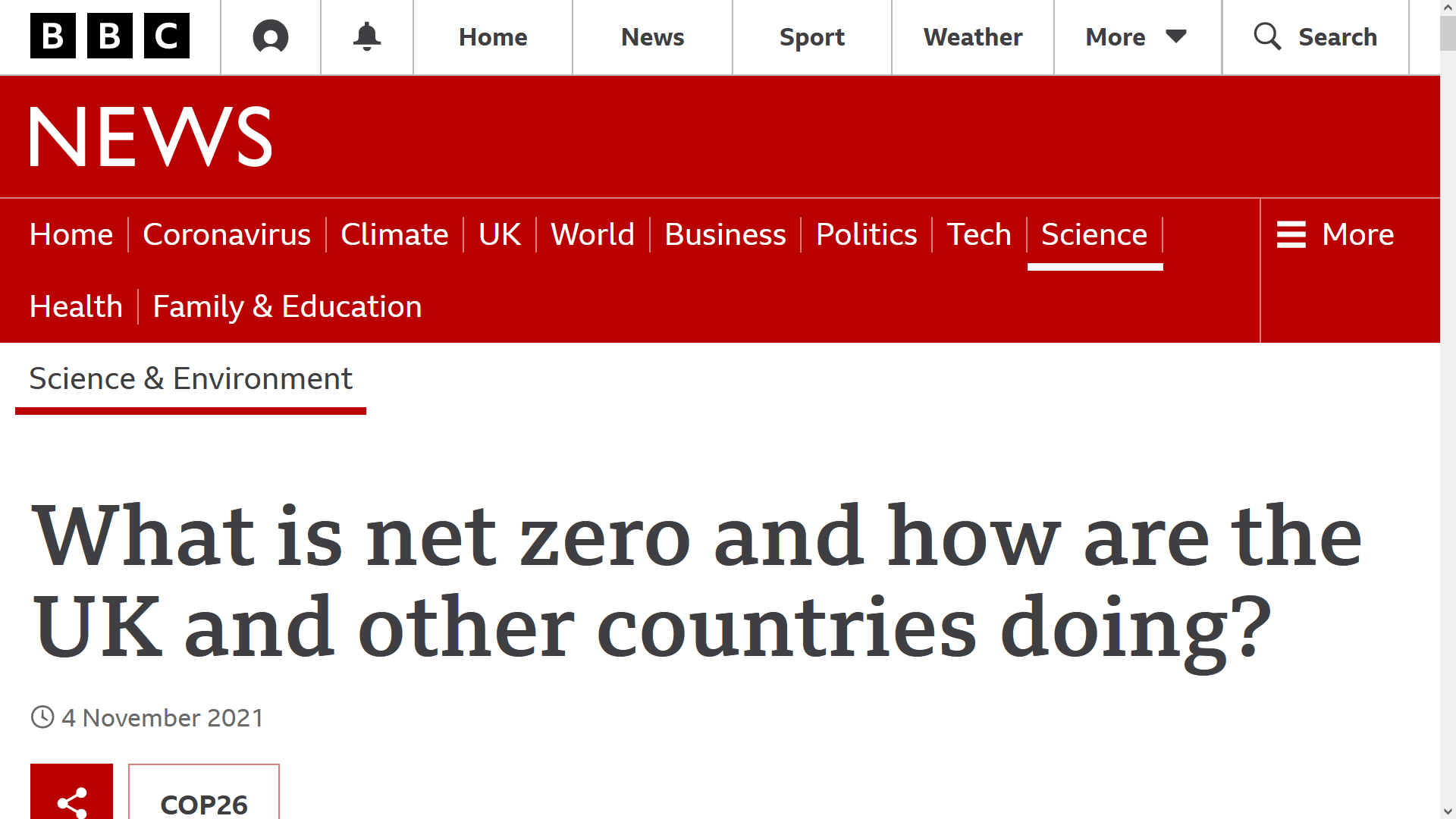|
NET ZERO
Please use our A-Z INDEX to navigate this site where page links may lead to other sites, or see HOME
|
|
|
Net Zero is a sustainable balance where humans enjoy life without adding to greenhouse gasses.
In other words, what is going into the atmosphere, is balanced by what is coming out.
That would be a sustainable ideal.
Net Zero is the internationally agreed goal for mitigating global warming in the second half of the century. The IPCC concluded the need for net zero CO2 by 2050 to remain consistent with 1.5C.
All of the different terms (Zero Emissions, Carbon Neutral, Zero Carbon, Net Zero, Climate Neutral) point to the different ways in which emissions sources and sinks are accounted for in context, and help to indicate what is, and is not included in calculating actual projects, or targets.
There is an abundance of clean wind and solar energy that can produce green hydrogen and electricity to charge vehicle batteries, and back-up against power cut blackouts. But there is no transport infrastructure to support rapid energy exchanges for BEVs or FCEVs. The SmartNet™ system could be the solution, also providing load levelling for national grids having to cope with renewables.
We are already well over the top of what the earth can sustain, which is why we have melting ice caps that are raising sea levels and flooding islands.
So, yes, we need to attain Net Zero, but we also need a bit more to allow for the ice caps to cool.
This will be difficult to attain, since the population of earth is growing, with each new mouth demanding food and energy, to add to greenhouse gases.
Should we reach that point, Net Zero should follow from the Circular Economy we should have created by then.
We need to capture more carbon dioxide and lock it up, such as in timber. That means not burning coal in coal-fired power stations. Because that is the reverse of carbon capture.
Each country should be independent energy wise, to prevent reliance on another, and a one way flow of revenue in imbalance. Some countries like Japan, may find that difficult due to geographical limitations against industrial and residential intensity.
That also means no conflicts, where there is no such thing as a zero emission war. We have to learn how to contain ourselves, to be content with what we have. And not seek to empire build. Another form of Net Zero. Blissful harmony.
Generally, net zero refers to all greenhouse gases, that is, all gases covered under the Kyoto Protocol, unless the definition refers to a specific gas (e.g. net zero carbon).
OXFORD NET ZERO'S 7 ATTRIBUTES - JANUARY 11 2022
1.
Front-loaded emission reductions
The paper was co-authored by Professor Sam Fankhauser, Dr Steve Smith, Professor Myles Allen, Kaya Axelsson, Dr Thomas Hale, Professor Cameron Hepburn, Professor J. Michael Kendall, Dr Radhika Khosla, Dr Javier Lezaun, Eli Mitchell-Larson, Professor Michael Obersteiner, Professor Lavanya Rajamani, Professor Rosalind Rickaby, Professor Nathalie Seddon and Professor Thom Wetzer.
WHAT DOES THAT MEAN TO YOU?
Reaching net zero will involve moving from fossil fuels to renewable energy for our power, and abandoning vehicles run on petrol and diesel, in favour of those powered by electricity and hydrogen.
UK GOVERNMENT PLEDGES - JUST A DROP IN THE OCEAN
Presenting the government's net zero strategy to the House of Commons in the run up to COP26, the government pledged:
- Grants of up to £5,000 for householders to install low-carbon heat pumps
- £120m to develop small nuclear reactors (no announcement on the go-ahead for the Sizewell C nuclear power station in Suffolk)
- £625m for tree planting and peat restoration
LINKS & REFERENCE
https://www.bbc.co.uk/news/science-environment-58874518 https://www.nature.com/articles/s41558-021-01245-w https://netzeroclimate.org/
Please use our A-Z INDEX to navigate this site
This website is provided on a free basis to promote zero emission transport from renewable energy in Europe and Internationally. Copyright © Universal Smart Batteries and Climate Change Trust 2022. Solar Studios, BN271RF, United Kingdom. The name SmartNet™ is a registered trademark.
|



